Sept 28 Long Medium Close
There are three basic shots you use in filmaking. Long Medium and Close. Any shot in the movie you making falls into one of these catagories. The shot can be a combination close/meduium or even a close/medium/long or anyother combination that will best describe what you want the audience to see.
Lets go over the basic shots: Long, Medium and Close. The names pretty much describe what they are.
In general, a long shot is used for establishing location. In a long shot you don't see character expressions.
Medium shots is for action/acting. You can read the facial expressions and depending on the shot, the whole body
Close ups are used for showing a charaters emotions and what they are thinking or a conversation. They help the audience share the moment with the actor.
Typical ordering for these shots would be:
- LONG SHOT - establish locale
- MEDIUM SHOT - introduce character
- CLOSE SHOT - character talks
As you are selecting shots to display your story, think about the best composition of your characters in the environment and what the the camera placement tells the audience about the shot.
Let's take a look at Sunset Blvd.
In a previous shot the director established our main character, Joe Gillis, in the servants quarters. Lets start with this medium shot.
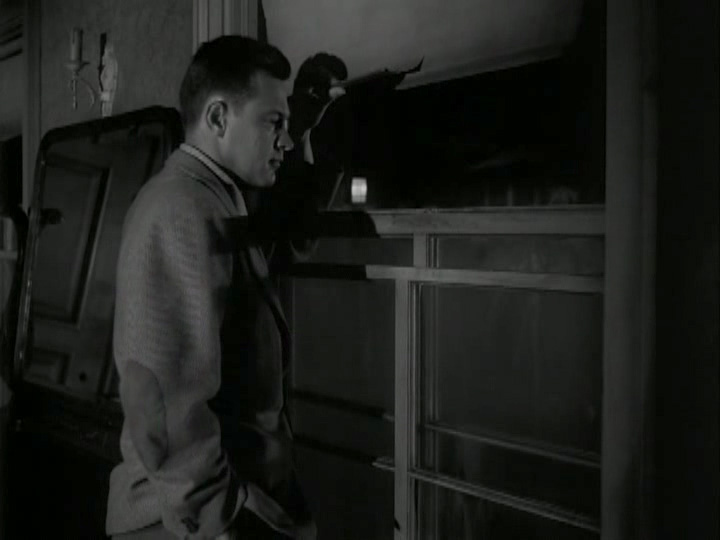
Joe is in his room looking out the window. Camera is at a low angle to give some drama to the scene.
CUT TO:
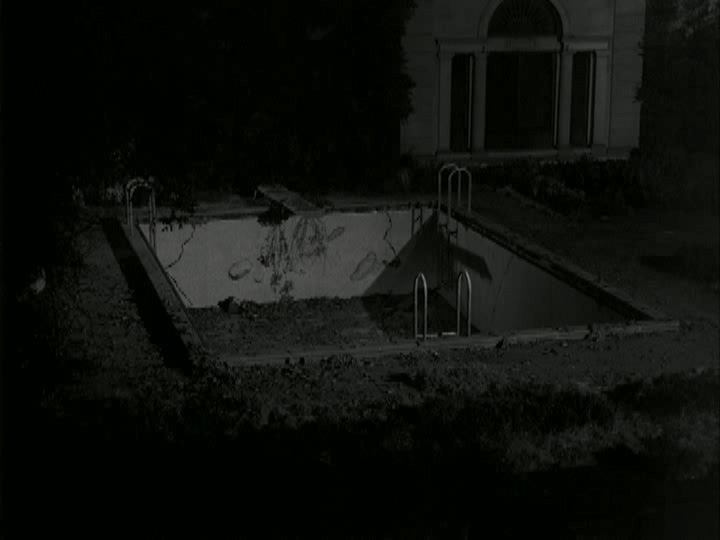
A long shot of the pool and a bit of the grounds. It's shot from a high angle telling us that Joe is on the second floor. It orients the pools proximity to the room he's in. The pool is dilapidated as are the grounds - giving us insight into it's owner
CUT TO:
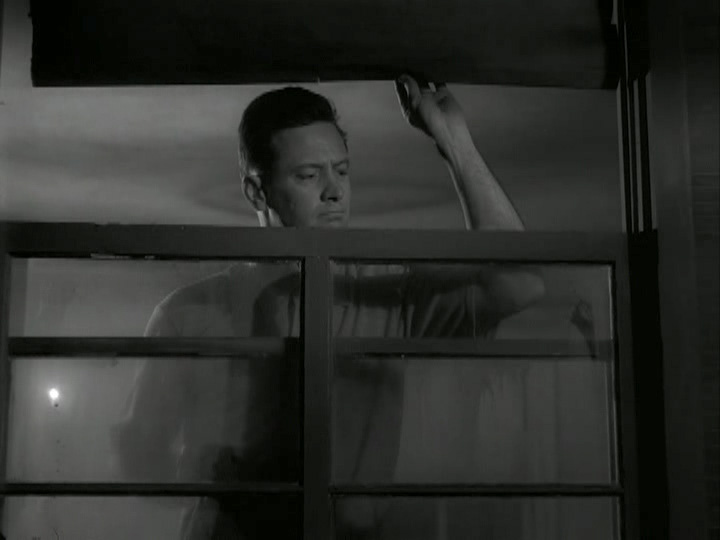
Medium shot. Camera low reminding us he in an upstairs room. This is shot from outside the window giving us a clear view of his face and reinforces that he is looking outside.
CUT TO:
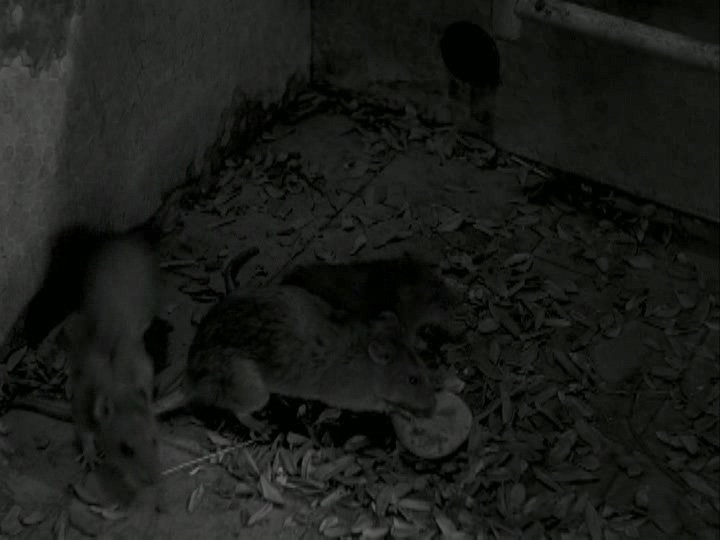
Close up on the rats in the pool. Down shot. More information about the the property -- it's not only falling apart but creepy.
CUT TO:
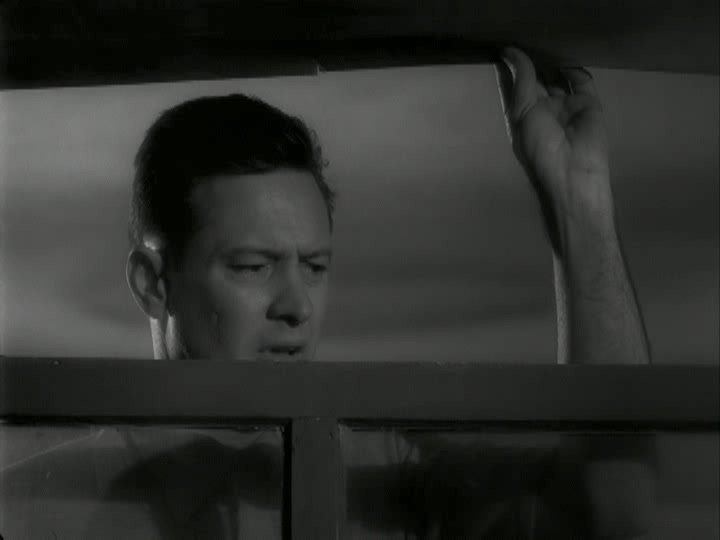
Close up of Joe's face. We could have read his facial expression from the previous shot. By cutting in close, the audience feels more intimate with Joe and shares his disgust. The window frame and shade box him in compositionally and remind us he's looking out the window.
Very basic yet effective set up.
·
Here's a scene from The Incredibles that uses close ups and extreme close ups. It is Bob's 'call to action' that launches us into the second act. There are only a few 'long shots' in this scene.
Open on a close up of a framed magazine cover. Light shines on it letting us know a door was opened.

Bob walks into a small room. This is the first time we see his mancave. The director hints at what this room is by the opening close up. On the first long shot we see Bob's desk. His suit is in the corner but not featured. This is his office. It is a tight space and he is a big guy, hence the closeups.
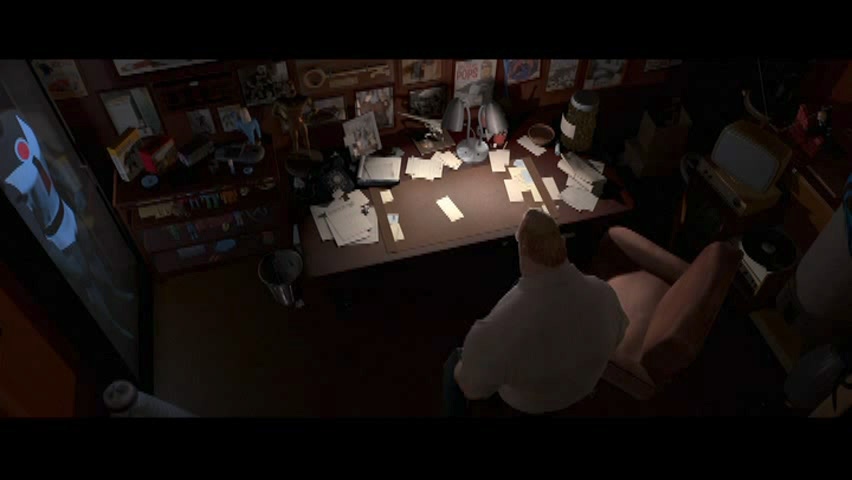
As the scene progresses we have a number of tight shots of Bob emptying his briefcase. The director makes use of camera moves to go from one shot to the next instead of inserting a point of view shot.
In the example below the camera follows from a medium on Bob to a close on the trash can.
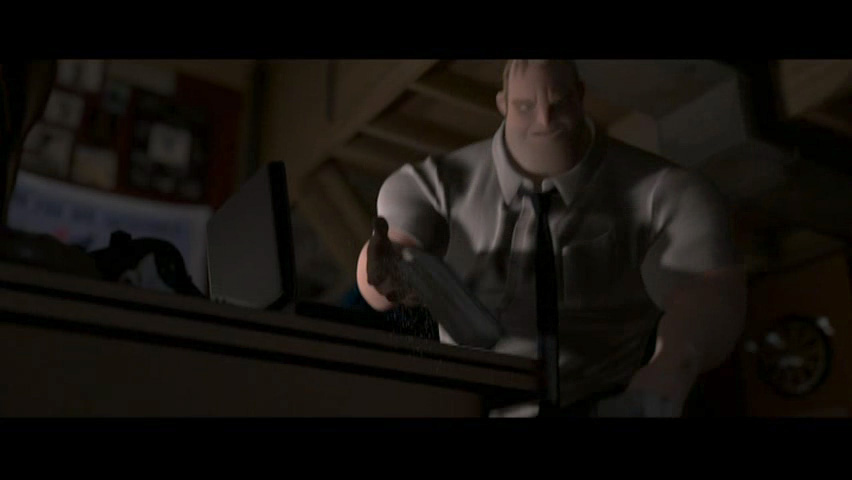
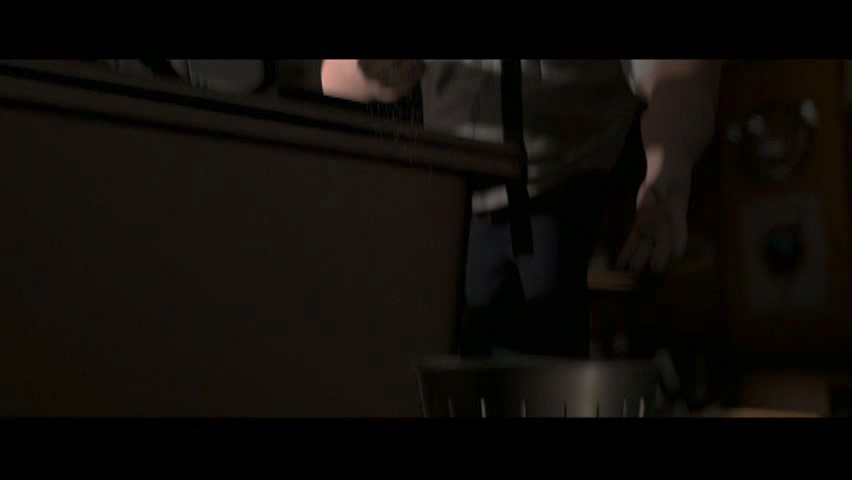
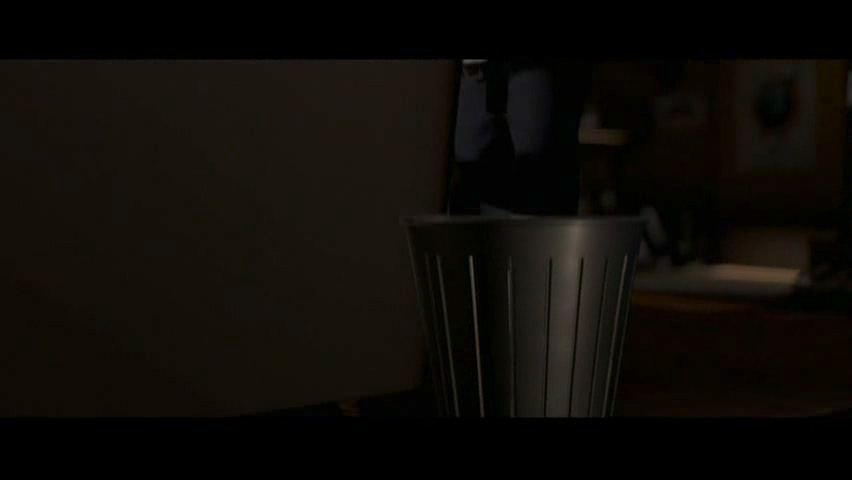
After Bob dumps everything out of the briefcase, he hears an unexpected sound punctuated by this Extreme Closeup:
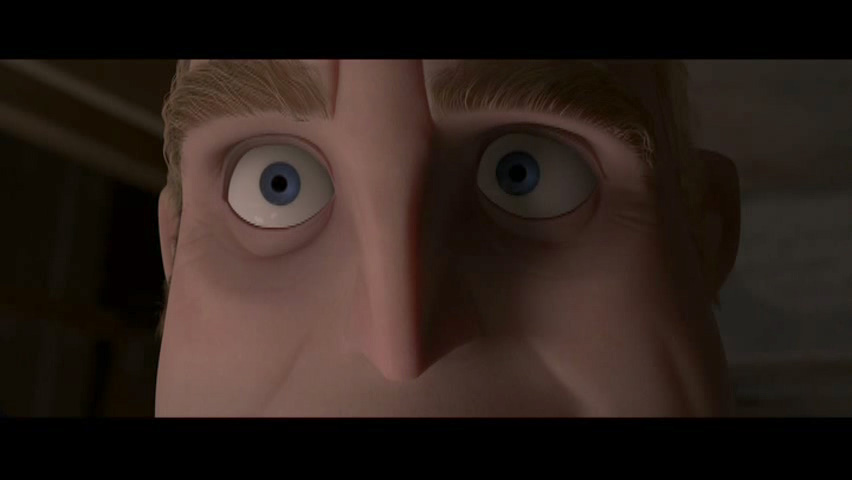
He looks down to see what it was. Notice the camera placement, low -- creating a combination medium and closeup. Very suspenseful.
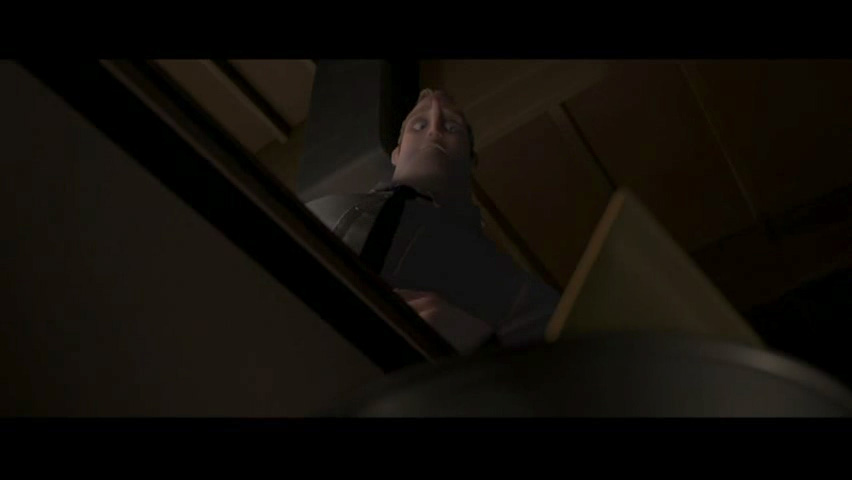
After opening the envelope and discovering the computer pad, we cut back and forth to closeups of Bob's face and the screen. The camera pushes in during the cuts giving the feeling of hiding in a dark closet looking at a something forbidden.
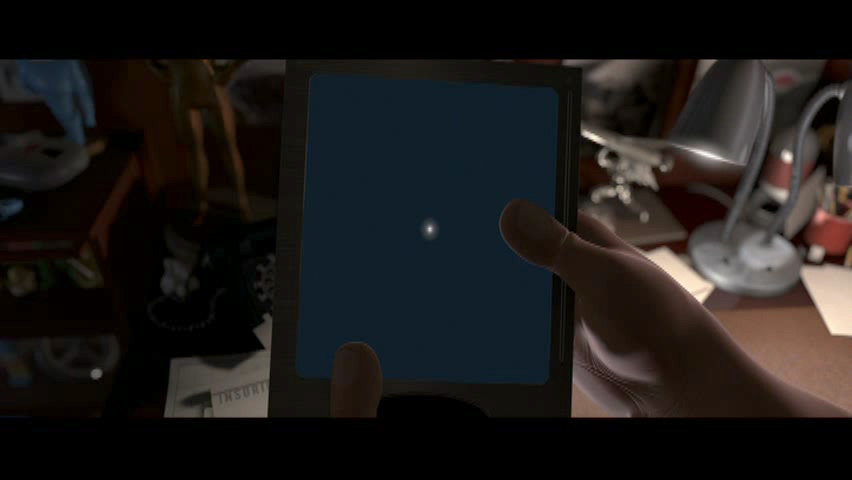
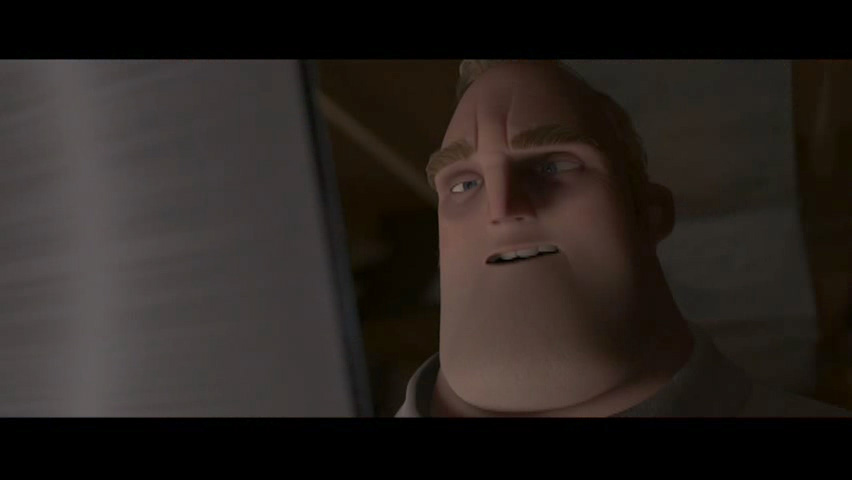
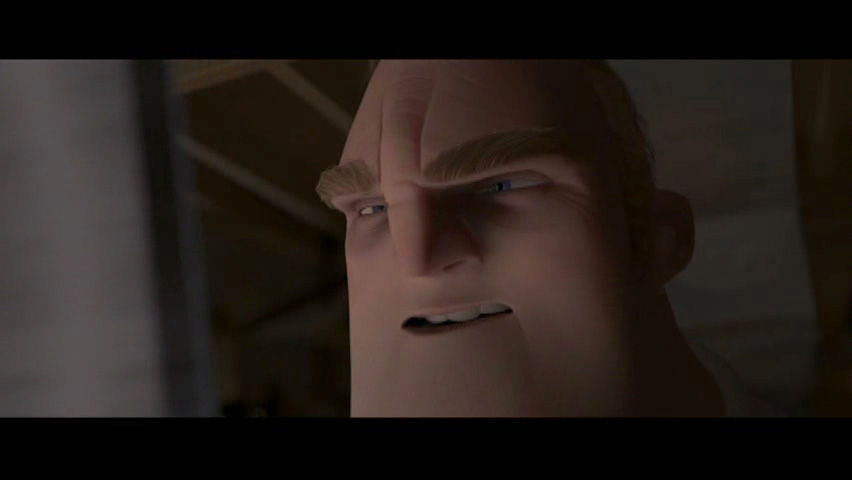
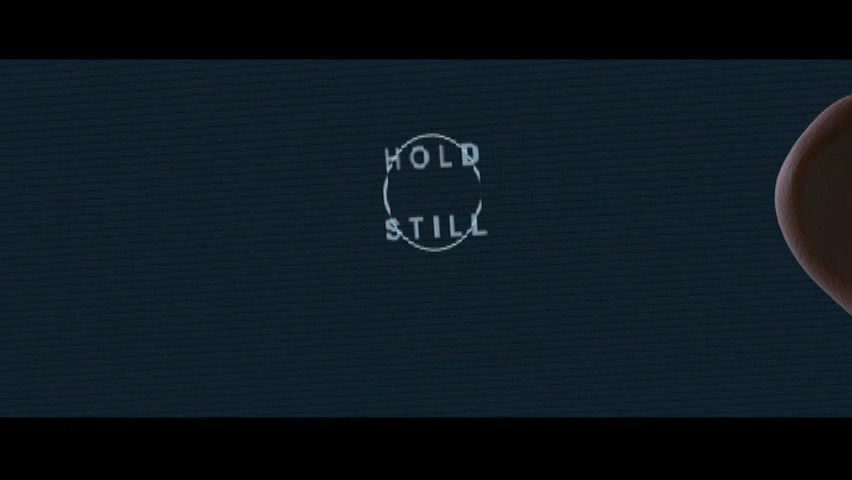
When Mirage beging to speak, the shot feels very intimate between two characters even though it is a computer image. This feeling is a product of the pacing and the build up of the closeups.
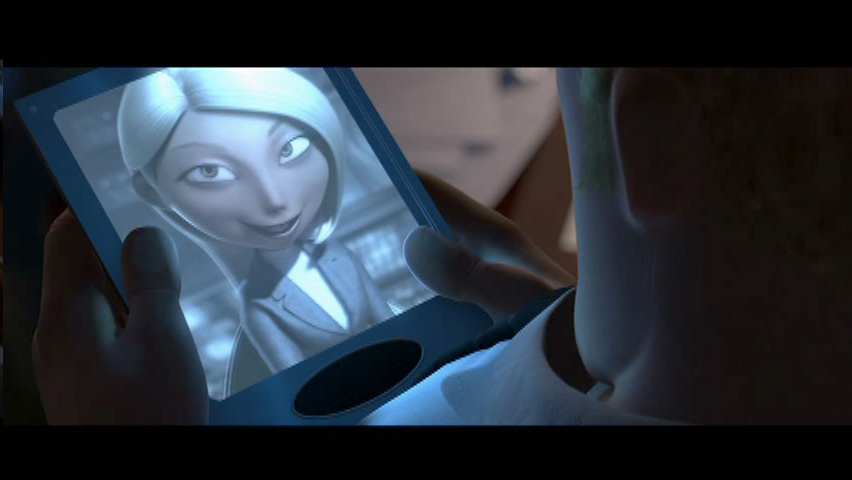
Here's the clip. Right click for menu to play.
Now that you get the idea of long/medium/close and when to use them let's discuss camera placement. Where you put the camera in a shot subtlety informs the audience whose point of view (POV) it is or where the character is in relation to what you are showing. It can also make you feel like you are in the movie or disconnected from it among other things.
Consider what the camera placement says in the shots below:
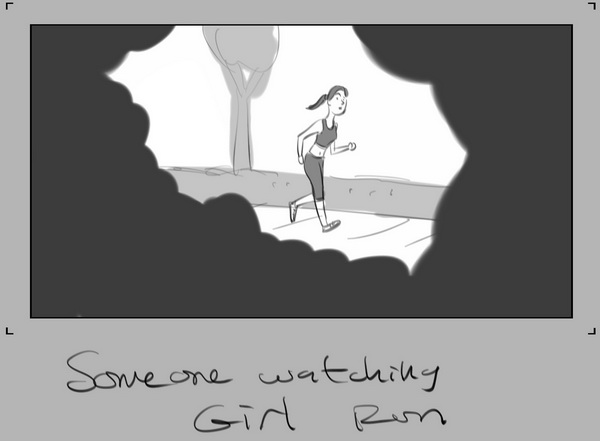
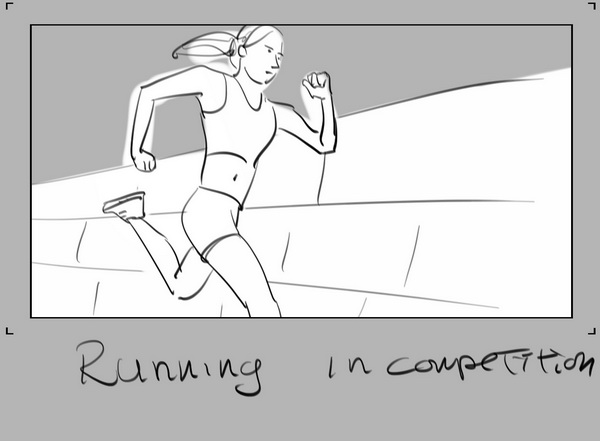
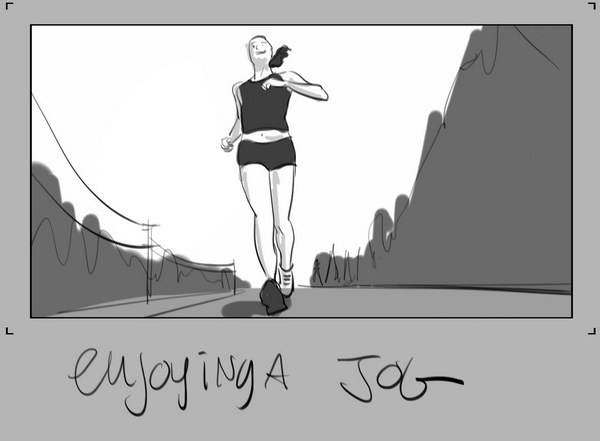
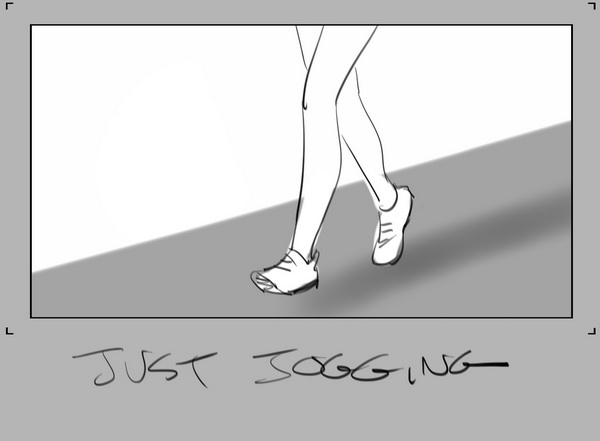
All four shots have the same subject matter - Woman Jogging. Notice how the camera placement changes your perception of what is going on.
hunter vs hunted
Using long, medium and close establish a location, the players and the conflic between two characters. The theme is hunter vs hunted. Due Oct 8th.
Don't get bogged down in cute storytelling or trying too hard to come up with something clever for this assignment. This is purely a mechanical exercise (of course if you do have something cute and clever I won't have a fit).
Good to Know...
The terms scene, shot and sequence are sometimes misunderstood.
Scene defines the place or setting where the action is laid. This expression is borrowed from stage productions, where and act may be divided into several scenes, each of which is set in a different locale A scene may consist of one shot or a series of shots depicting a continuous event.
Shot defines a continuous view filmed by one camera without interruption. Each shot is a take. When additional shots of the same action are filmed from the same set-up – because of technical or dramatic mistakes – the subsequent shots are called re-takes. If the set-up is changed in any way – camera moved, lens changed, or different action filmed – it is a new shot, not a re-take.
A sequence is a series of scenes or shots, complete in itself. A sequence may occur in a single setting, or in several settings. Action should match in a sequence whenever it continues across several consecutive shots with straight cuts – so that it depicts the even in a continuous manner, as in real life. A sequence may begin as an exterior scene, and continue inside a building as the players enter and settle down to talk of perform. A sequence may begin or end with a fade or dissolve; or it may be a straight-cut with bracketing sequences.
– Joseph C. Mascelli. The 5 C's of Cinematography. p. 13.